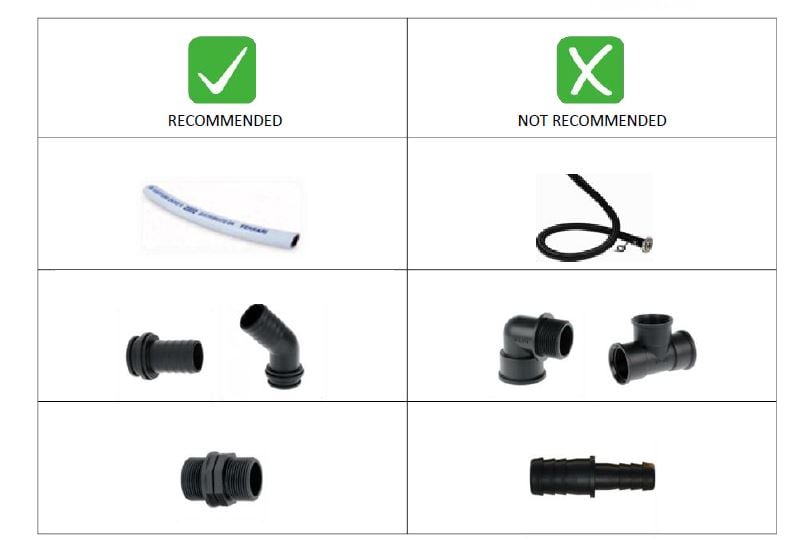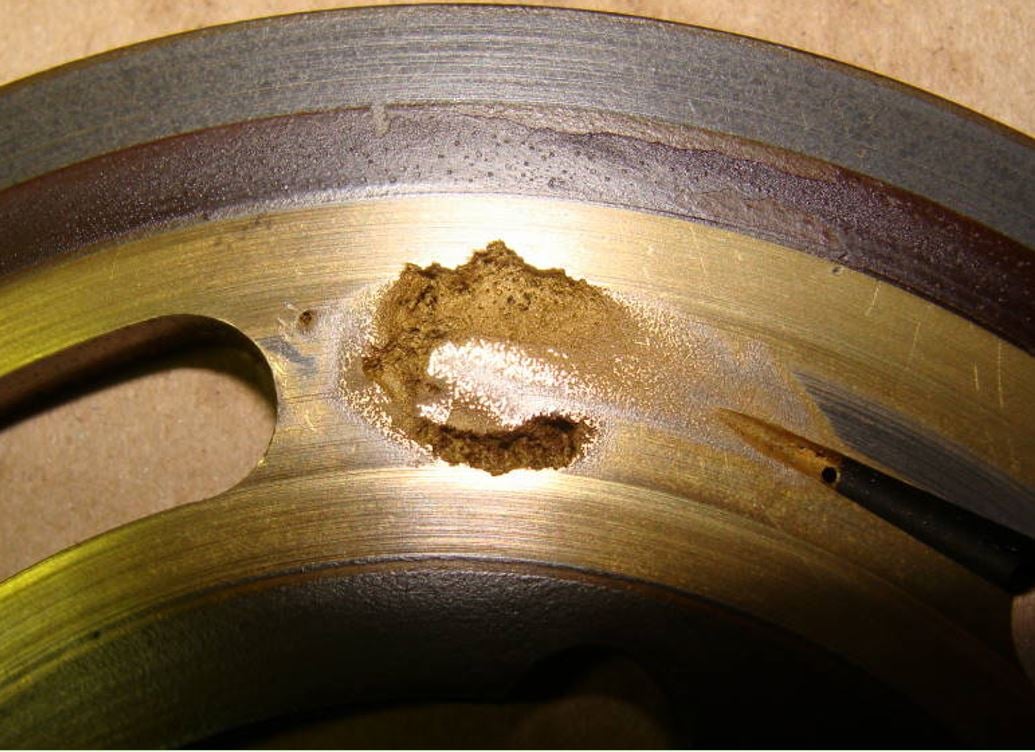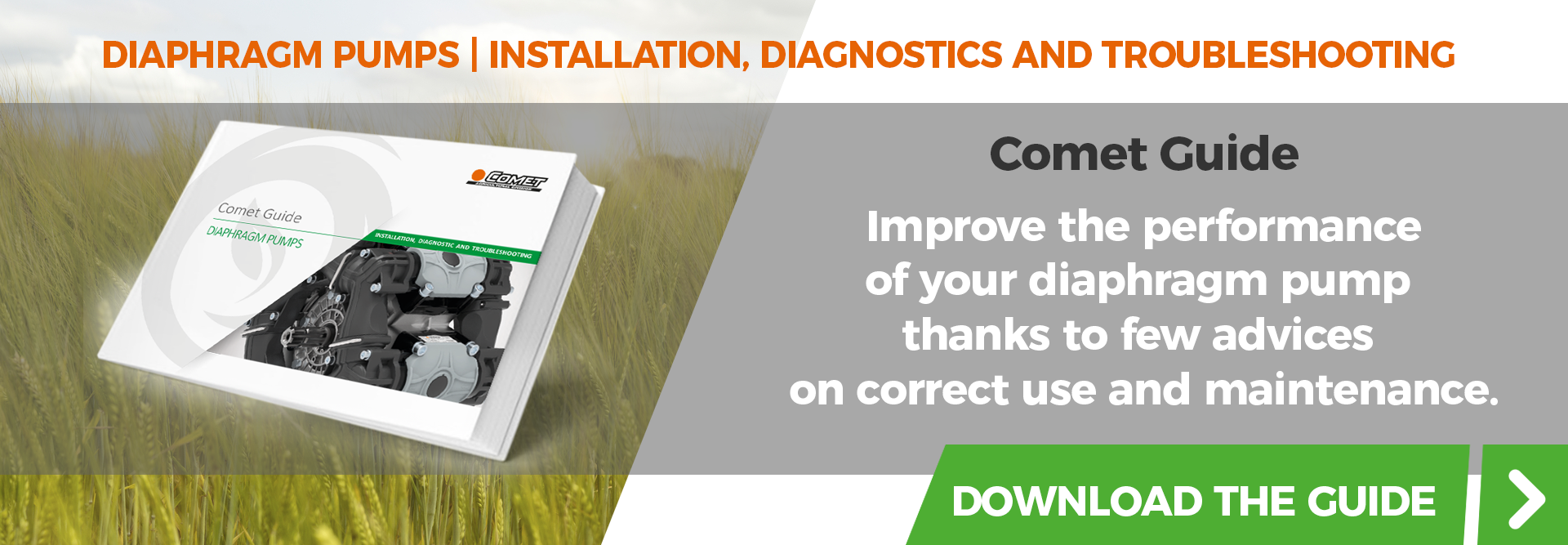Cavitation is a physical phenomenon which consists in the formation of areas of vapour inside a fluid.

The liquid is transformed into vapour bubbles, which once in the delivery line where the pressure is positive, return to liquid state and implode due to compression, generating an intense shock wave which attacks the diaphragms, the valves and the heads with serious damage.
The phenomenon of cavitation is of great importance and possible critical outcome for the operation of a spraying machine. Let us find out why.
When does cavitation occur?
When pressure drops, the fluid tends to expand in volume. This is the basic principle of any pumping system, so a fluid placed in two environments at different pressures tends by its very nature to expand to compensate for this Δ, moving from the higher-pressure environment to the lower-pressure environment. In practice, the Δ pressure generates a downward movement of the fluid, then a rise, and in short, pumping.
However, when the pressure is lowered beyond a certain threshold, the fluid expands so much that it passes from the liquid to the gaseous state, in the form of bubbles (real cavities) containing vapour. This can have very negative consequences on both the pump and the machine.
In a pumping system, the causes of cavitation can vary:
- bottlenecks in the suction pipe
- excessive length of the pipe itself
- excessive difference in level between the supply basin and the pump, i.e. greater than the pump's head capacity. Head means the ability of a pump to raise a certain volume of liquid to a certain height. In other words, it is the maximum lifting height difference that can be achieved with a given pump.
In case of cavitation, the vapour bubbles rise from the suction pipe towards the diaphragm pump, where they undergo a drastic increase in pressure (in practice they are crushed violently) and this causes a violent implosion, recognizable by a characteristic noise, i.e. as if gravel was passing through the pump.
These violent shocks lead to a significant erosion of the components of the diaphragm pump, which can cause valve rupture, diaphragm tearing, and even real head fractures.
Can cavitation be avoided?
Yes, to prevent cavitation it is necessary to ensure that the negative pressure on the suction line never exceeds the limits set by the pump. This is achieved:
- by avoiding sucking in water from excessive depths (maximum 4 metres);
- by avoiding bottlenecks on the suction line: the pipes must be reinforced (spiralled) to prevent the walls from sticking to each other, blocking the passage towards the pump;
- by cleaning the suction filters daily;
- by reducing to a minimum the curvatures of the circuit and the use of ball valves on the suction line;
- by using pipes with dimensions equal to or greater than the diameter of the suction connection of the pump. It is better to avoid using smaller pipes.
- By avoiding the use of reducers and possibly elbow fittings.
- By checking with a vacuum gauge that the negative pressure on the suction line of the installed pump never exceeds -0.3 bar.
Regular maintenance is always highly recommended to avoid problems and malfunctions, and to extend the life of your diaphragm pumps.











